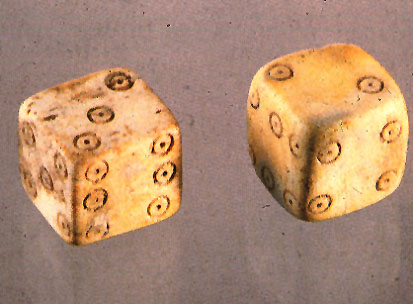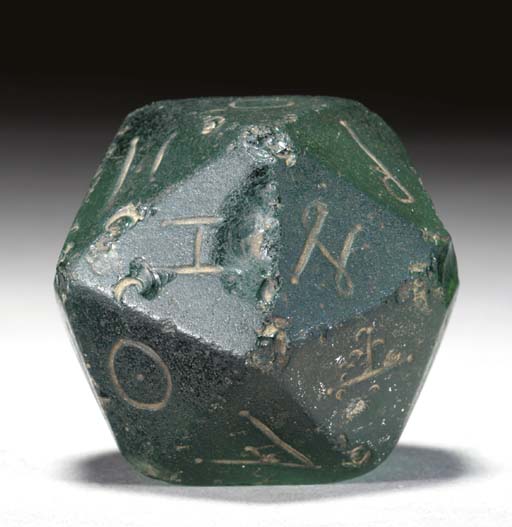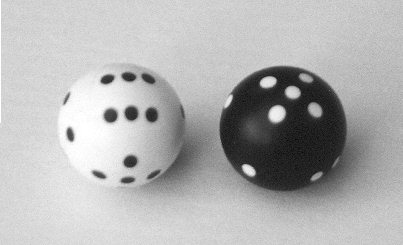Polyhedral Dice

One practical application of polyhedra is in the design of
dice.
Above is a pair of cubical dice from Pompeii, made of bone in the first
century AD. Their design is basically unchanged to this day.

One practical application of polyhedra is in the design of
dice.
Above is a pair of cubical dice from Pompeii, made of bone in the first
century AD. Their design is basically unchanged to this day.

The Romans also had icosahedral dice. The image above shows a 5.2 cm
die
from the second century AD, which sold recently at auction for
$17,925.00. In general, any convex polyhedron in which all
the faces are equivalent can be used as as the form for fair
dice.
This includes the Platonic solids and
the Archimedean's duals.

Although the most familiar shape for dice is the cube, many other shapes are possible. Above is an assortment of commercially available dice that are easily obtainable at game stores. In the center is a 30-sided rhombic triacontahedron. Around it, starting at the top and going clockwise, is a dodecahedron, icosahedron, octahedron, tetrahedron, cube, and pentagonal trapezohedron. That last one, though a member of the less well known trapezohedra, is popular with teachers when teaching probability, because it has ten sides, so can be used to make random digits of decimal numbers. It is superior for this purpose to the pentagonal dipyramid, which also has ten faces but would not have a top face horizontal. The tetrahedron also has the problem that when one face is horizontal against the table, no face is horizontal at the top; so the tetrahedral dice has its numbers written three times around each vertex, and one simply reads the number which surrounds the uppermost vertex.

Above is a fun pair of dice that are shaped like spheres, but work like ordinary cubical dice. Each of the six "faces" lands up with equal probability, and they never come to rest halfway between two numbers. The trick is that they are hollow, with an octahedron-shaped cavity that contains a ball bearing. This weight lands in one of the six corners of the cavity, each of which lies under one of the six "faces". This works because the octahedron is the dual to the cube.